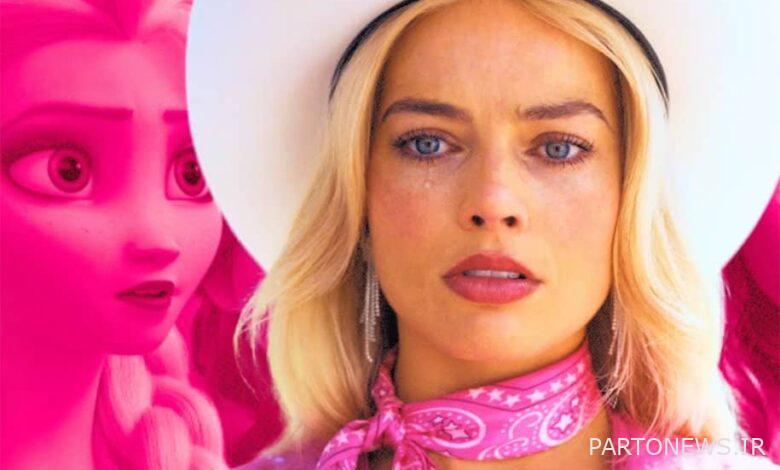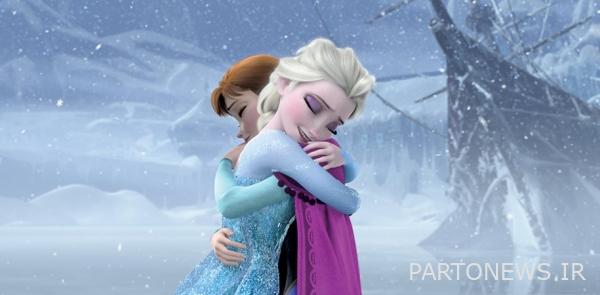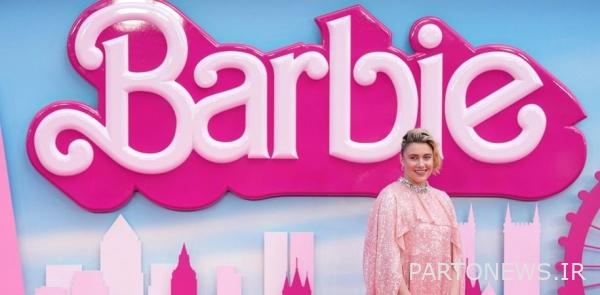Which female directors have broken records at the box office?

Charso Press: The record for highest ticket sales among female directors was previously held by Patty Jenkins, another American director, for Wonder Woman, with $821.8 million.
Other female directors whose films have grossed more than $1 billion are Jeff Lee and Anna Boden, the former of whom co-produced Frozen 1 and 2 with male director Chris Buck (Episode Sales The first one grossed $1.3 billion, the second part grossed $1.45 billion) and the second directed Captain Marvel (grossing $1.1 billion) with Ryan Fleck.
Now the success of “Barbie”, which is the result of a product placement and the work of the right and professional marketing team, is an important incident for female films and shows that these films have high sales potential; This challenges the lack of opportunities for female directors in Hollywood. Of course, despite all the successes and records of women in this field, female directors still face obstacles in this industry, including gender inequality and attitudes that lead to ignoring their talents and successes.
“Barbie” has brought the issue of female director and female films into the circle with its success at the box office and breaking records from this point of view. The fact that the director of this film is a woman is one of the reasons for its success at the box office. However, filmmaker Greta Gerwig’s work on this film should not be summed up simply as a film with a “female director”, nor should the film’s box office achievements be compared to other feature films directed by women. But, the effort of female directors to get projects like “Barbie”, or any other important and big project, gives a special feature to the big sales number of “Barbie” at the box office. Like a handful of other films directed by women in more than a hundred years of cinema, “Barbie” now makes the point that women’s cinema can be big at the box office.
The first examples of the success of films by female directors at the box office
Although Guy Blush’s Alice is technically responsible for the first example of narrative cinema in film history, female directors have often struggled to gain a place in the mainstream of the film industry. The biggest films of the pre-New Hollywood era were mostly directed by men, and American female directors were rare, with only the likes of Ida Lupino and Dorothy Arzner making it in the industry. Apparently, the movie “Wayne’s World” (Wayne’s World) in 1992, directed by Penelope Spheeris, was the first movie directed by a woman, and its sales in the United States exceeded one hundred million dollars. A rare example of Hollywood trusting a director to make a mainstream comedy and well-known established characters; After “Wayne’s World”, Nora Ephron joined this prestigious club only a few months later with “A League of Their Own”.
At the end of the 1990s, the Wachowski sisters, Lily and Lana, who were still the Wachowski brothers at the time, made their debut with The Matrix, a big-budget action film that literally redefined films directed by women. The Wachowski sisters, just like Ida Lupino’s pioneering works in the world of film noir with the film “Detour” with their filmmaking based on “Bullet time” (also known by other titles such as Time Freeze, Time of Death, Staircase or Eye of Death) is a visual effect that by delaying and fragmenting time creates and creates a double and simulated performance for the main character) emphasized, they made history. Additionally, their work on The Matrix emphasized trans women’s perspectives, even if many gay audiences didn’t realize it in 1999. Their thematic and visual focus was redefining what a profitable female-directed cinema could look like. Meanwhile, What Women Want, the second feature from director Nancy Meyers (who had a long career as a screenwriter in the 1980s), set the box office standard for what female-directed cinema could achieve in 2000. , crushed Hollywood opened the new century with a romantic comedy that grossed more than $180 million domestically, marking the first time in history that a film directed by a woman has crossed $175 million in North America. Given the star power of Mel Gibson around 2000 and the film’s memorable marketing campaign, it’s no surprise that “What Women Want” as we know it emerged at the end of 2000.
Projects like What Women Want have shown that feature films by female directors have the potential to be blockbusters at the box office, yet Hollywood and other major film industries continue to refuse to hire women as directors. Even genres normally thought to gravitate toward female filmmakers, such as romantic comedies, hired people like Robert Luketic as directors instead of other interesting filmmakers who happened to be women. The dwindling opportunities for female directors in this era beyond the world of Nancy Meyers and the Wachowski sisters prompted the Guardian to publish a report in 2005 examining how and why there aren’t many opportunities for women to direct films.
Some of the reactions that this report received were a little strange; For example, a long comment by Sarah Radcliffe (one of the founders of the British film company Working Title) owes the existence of such a situation to women’s “childbearing”, which makes them more producers than directors. Meanwhile, director Mike Figgis says women aren’t strong enough to use film equipment. Others in the report, namely Anthony Migla and Naomi Harris, were much clearer and more specific about the larger reasons for the lack of female directors. In other words, they believed how the industry was inherently male and was designed to exclude women’s voices. Because of this, the opportunities for female directors, and of course, the chances of seeing female-directed films make a lot of money, even after a hit like What Women Want, were few and far between.
The success of female directors at the box office did not lead to more opportunities for them

However, even with these issues that plague the existence of films directed by women, the 2000s ended with an important event; The first live-action film directed by a woman with sales of two hundred million dollars. Until eight years later, this film was the only live-action film directed by a woman to achieve such an honor. And what was that movie? “Alvin and the Chipmunks: The Squeakquel” (Alvin and the Chipmunks: The Squeakquel) directed by Betty Thomas.
Unfortunately, this success not only did not significantly increase Thomas’s presence in mainstream filmmaking, but also did not increase the presence of female directors in general. However, four years later, another female director reached a major milestone at the box office; Jennifer Lee. She cemented her place in box office history with her appearance in the 2013 Walt Disney Animation Studios’ Frozen (alongside Chris Buck), which established her as the first woman to direct a Disney animated film. . Another rare example of a female director in an animated film was Vicky Jenson’s appearance in 2001’s Shrek, a very rare exception in an industry that automatically gravitates toward male directors.
However, Lee managed to land a directorial role on Frozen, which paid off for him, as Frozen not only became a blockbuster, but also became the first motion picture ever to have a The female director grossed a billion dollars worldwide. It was a remarkable achievement in the history of women’s cinema at the box office, even if it unfortunately did not lead to a flood of feature films directed by women. Until Lee directed “Frozen 2” in the late 2010s, not even Disney had another animated film directed by a woman. As usual, the improvements made by these films’ significant box office achievements did not seem to make a lasting impression.
In 2017, another major box office milestone for female directors took place, this time in the field of live-action cinema. Patty Jenkins was the filmmaker who first brought Wonder Woman to life as the lead in a live-action film. The importance of seeing Wonder Woman as a star on the big screen for the first time made audiences flock to theaters to watch this DC Extended Universe product. “Wonder Woman” became the first feature film directed by a woman to gross $100 million domestically in a single weekend, surpassing the total sales of “Frozen” in North America and becoming the biggest female-directed film in the territory. to be There weren’t many female directors yet, but they were making bigger waves at the box office than before.
“Barbie” once again proved that women can be successful at the box office

If there’s one box office statistic that bolsters female directors’ efforts to secure any mainstream film project, it’s 2018’s A Wrinkle in Time. Directed by Ava DuVernay, the film grossed $100 million domestically and became the first time in history for a black female filmmaker to surpass this threshold at the box office. The efforts of female directors only get stronger for women filmmakers of color, a fact that DuVernay’s appearance on A Wrinkle in Time made her the first black female director of a feature film to gross over $100 million. More than a hundred years after Alice Guy Blush established the rules of narrative cinema as an art form, marginalized genders, particularly non-white members of those populations, were still struggling to secure any major directorial projects. This is a disappointing reflection of the reality reflected by these kinds of box office statistics.
A year after A Wrinkle in Time, Captain Marvel, directed by Anna Budden and Ryan Flack, became the first film directed by a woman to gross $150 million domestically in a single weekend. The end of the year saw the theatrical release of Frozen II, once again directed by Lee and Buck, with a whopping $477.1 million domestic gross, making it the biggest North American feature film directed by a woman. . Now it looks like “Barbie” will not only surpass the sales of the second part of “Frozen”, but also become the first feature film by a female director to cross the $500 million mark in North America.
After “Frozen 2,” the Covid-19 pandemic has completely transformed the movie industry and, among countless other effects, has stopped most box office records for female-led films. With the exception of Candyman, which became the first film by a black female director — Nia DaCosta, director of 2019’s terrific indie Little Woods — to top the domestic box office, the 2020s saw plenty of films There were no profitable live-action films directed by women. That’s partly because potential box-office blockbusters like the latter’s Turning Red have been released online, depriving theaters of more examples of female-led cinema that shine at the box office.
Now, of course, that’s all changed with “Barbie,” although if there’s an element of disappointment about its massive box-office success, it’s unlikely to get Hollywood to really commit to a slew of different filmmakers. This is not a reflection of the quality of “Barbie” as a film, but rather a sad testament to how slow Hollywood has been to correct its obvious problems with gender inequality. Successful films directed by women are dismissed as a mere “happening” and therefore ignored, women are considered inherently “not made” for filmmaking, and no stellar record at the box office can prevent the existence of new projects by lucrative auteurs like Nancy. guarantee Myers.
The history of the biggest female films at the domestic and global box office is a reflection of the artists who survive in an unfavorable system. Best of all, they did it while showing films that covered a wide range of subject matter. Filmmakers like Greta Gerwig continue to prove that films directed by women can be some of the greatest films on the planet. Hopefully, Hollywood will finally realize that these projects should become the norm and not the exception in their list of productions of the year.
Source: collider

